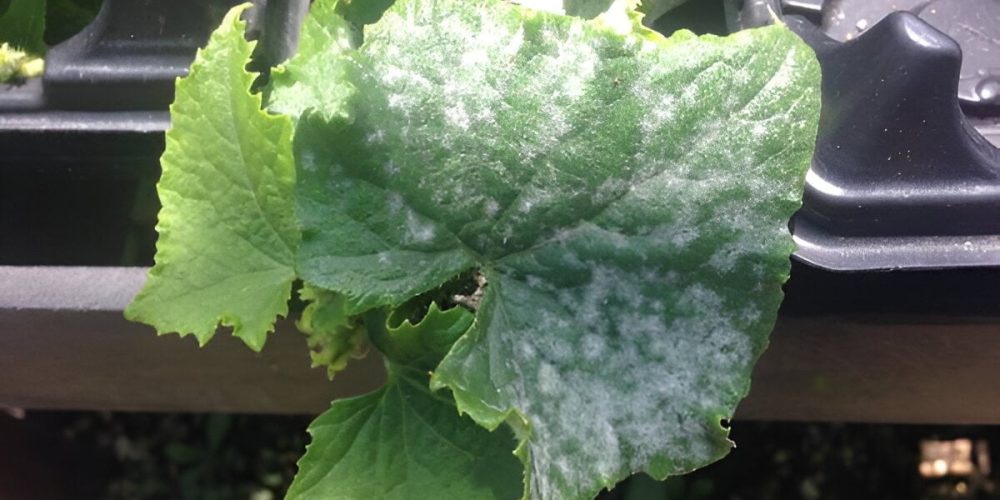Table of contents of the article
TogglePowdery mildew of zucchini is a fungal disease that causes white spots on leaves and affects crop productivity. In this article on your website, WORLD OF PLANTS, we will review methods of prevention and treatment.
Symptoms of powdery mildew on cucurbits in zucchini
- Scientific name : Powdery mildew of cucurbits
- The causative fungus : Sphaerotheca fuliginea Pollacci
The infection begins on the lower surface of old leaves around the base of the plant, then spreads to new leaves. Symptoms appear in the form of small, round, white, powdery spots. Then these spots expand and connect with each other to cover most parts of the plant, which leads to the leaves turning pale, then yellowing, drooping, and drying out.
Similar symptoms may appear on petioles and stems.
The fruits do not suffer from the disease, but they are few in number and small in size, and may become deformed, and the percentage of solid matter decreases, thus having a poor taste, and becoming more susceptible to post-harvest diseases.
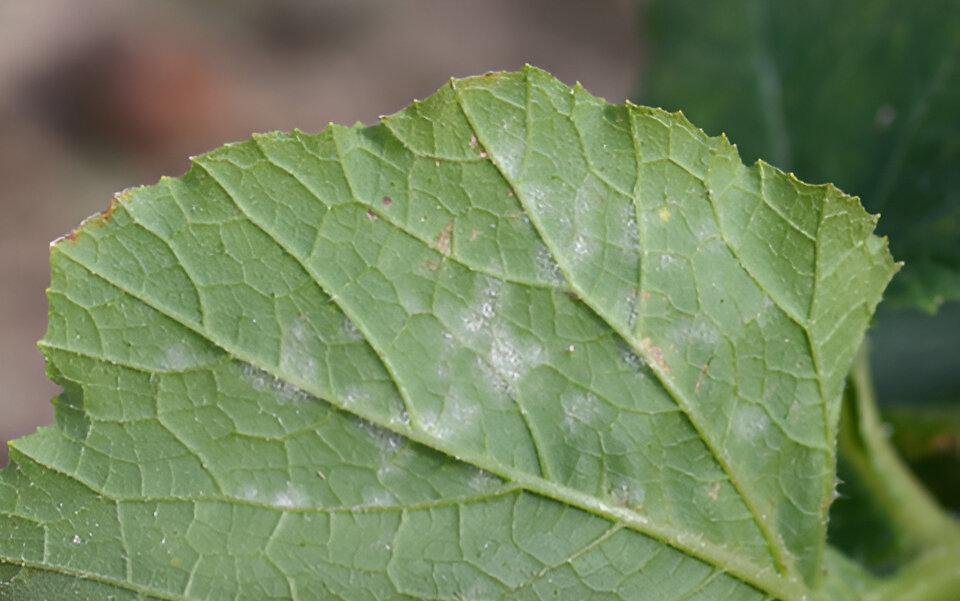
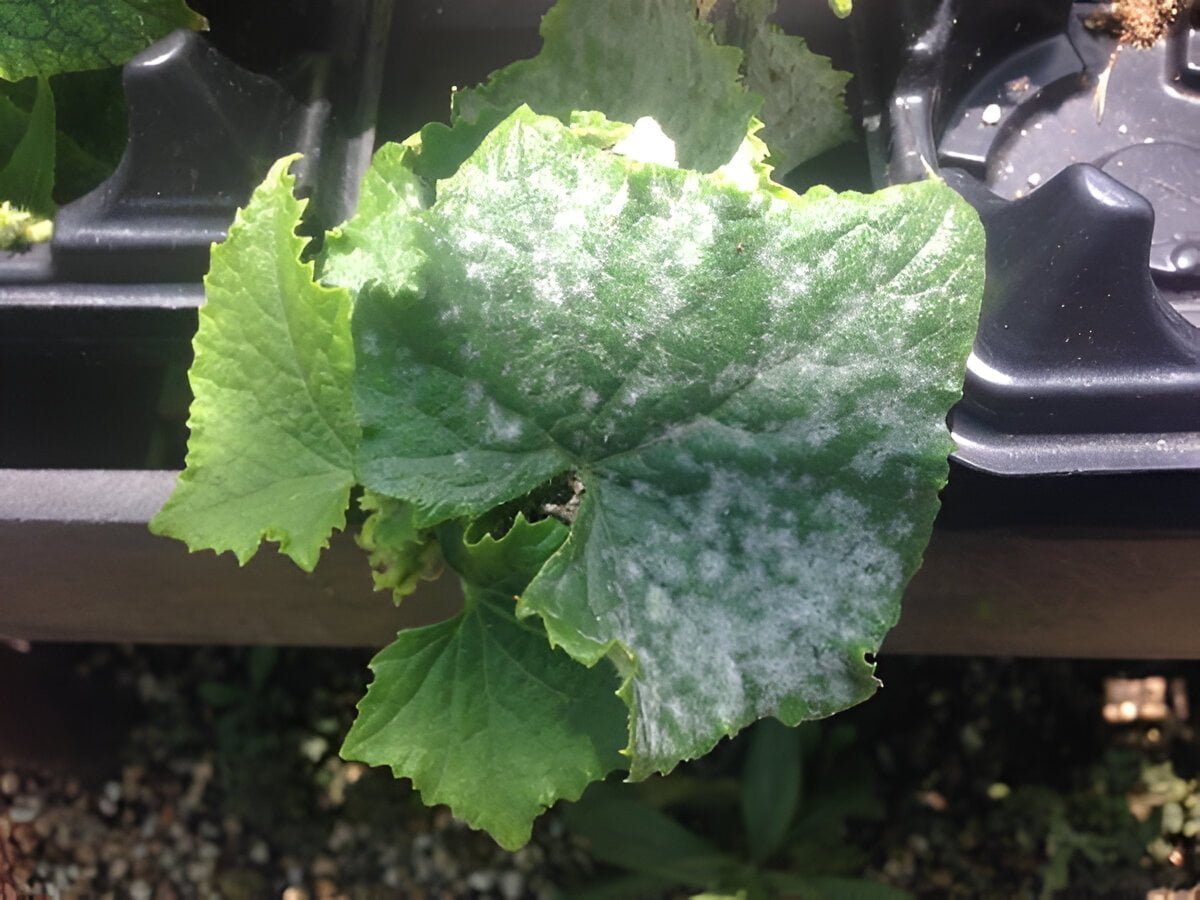
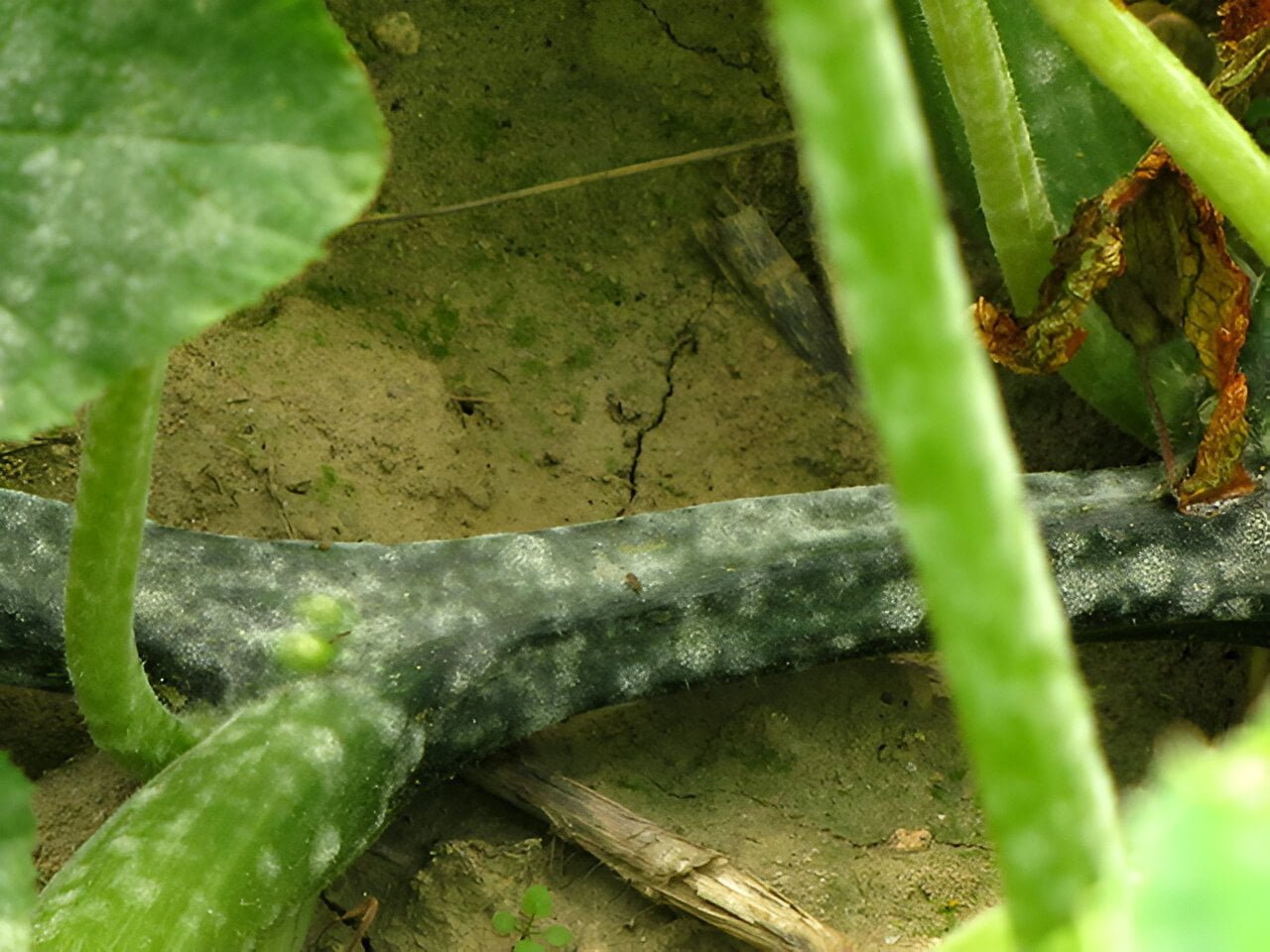
Causes of powdery mildew on cucurbits in zucchini
- Cultivation of sensitive varieties
- Powdery mildew infection prefers humid conditions with temperatures between 68-81 degrees Fahrenheit.
- Spores produced in leaf spots are blown away by wind to infect other leaves
- Powdery mildew affects heavily planted plants, plants crowded with weeds, plants in shady locations, and plants that have been overfertilized.
Suitable conditions for the spread of powdery mildew on cucurbits in zucchini
- The disease prefers moderate temperatures of 68-80°F, medium to high humidity (50-90%), dense foliage, and low light. Infection can occur under dry conditions and relative humidity as high as 50
Powdery mildew development cycle on cucurbits in zucchini
- Given the rarity of the ascomycete stage of the fungus, infection most likely occurs at the beginning of the season through airborne conidial spores from other cultivated cucurbit plants, or from wild plants and weeds that the fungus harbors during the period of absence of cucurbits.
- Conidial spores form within 3-7 days of infection, depending on the prevailing weather conditions. These spores are responsible for spreading the disease during the season by wind and some insects.
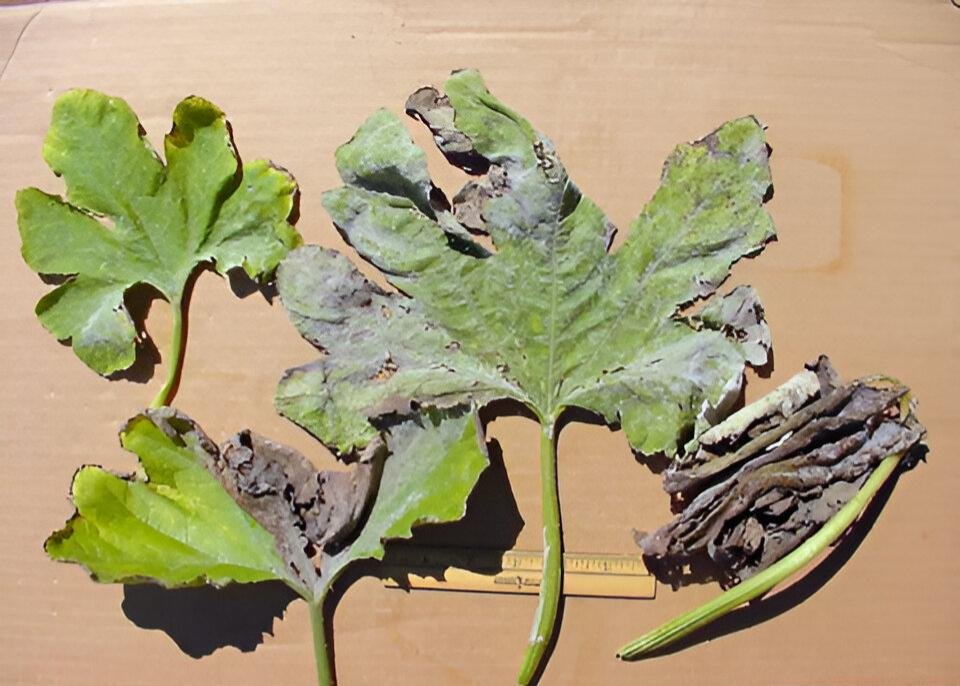
Losses of powdery mildew spread on cucurbits in zucchini
– Reduced yield by decreased number and/or size of fruits. Fruit quality can also be negatively affected by sunburn (due to leaf drop), incomplete ripening, reduced storability (winter squash), poor peel quality or discolouration of the handles ( Pumpkins). In addition, infection with powdery mildew exposes plants to other diseases (gum stem blight
Infected plants reach senescence early, which leads to a shortened production period
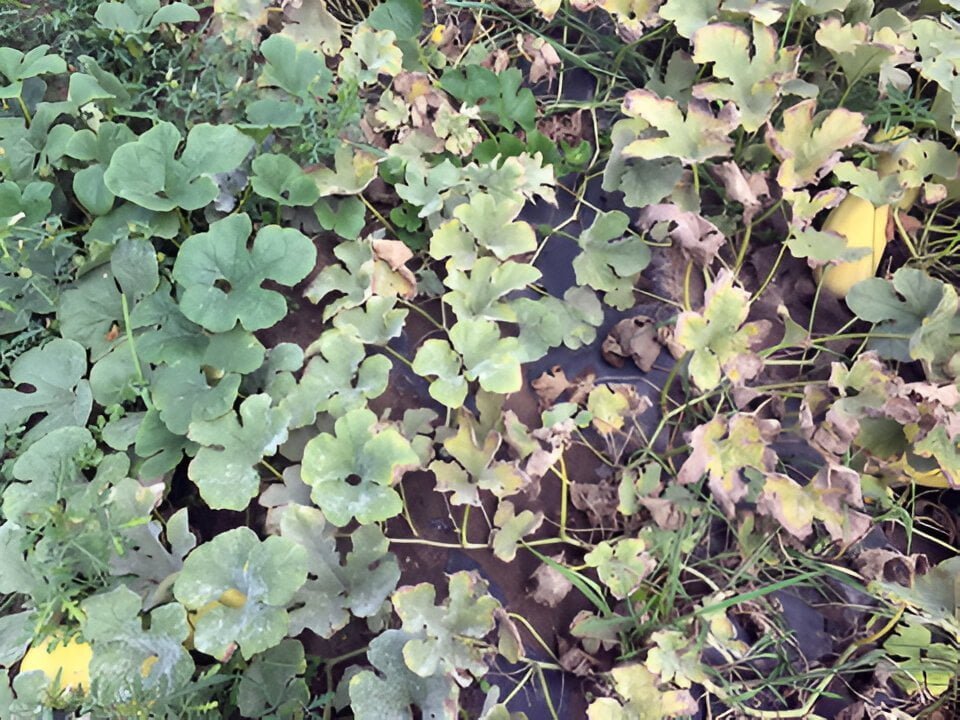
Strategy for controlling powdery mildew on cucurbits in zucchini
Preventive measures to prevent powdery mildew on cucurbits in zucchini
- Cultivation of varieties or hybrids that are resistant or tolerant to the disease.
- Provide good air movement around plants through proper spacing, plant stacking, and weed control.
- Proper spacing when planting is important
Chemical and organic control recommendations against cucurbit powdery mildew in zucchini
- Organic control :
- Explore fields regularly (especially the lower surfaces of leaves) and apply fungicides early in the development of the disease
- Chemical control :
- This disease can be controlled by using a surface pesticide, or by spraying or fumigating with sulfur as soon as symptoms appear, and spraying is repeated whenever necessary. Its harmful effect can be reduced by diluting it with a carrier substance such as oven ash (10-15% sulfur). It is preferable not to use sulfur when the temperature is high and the weather is dry.
- Because powdery mildew appears on the lower leaves first, especially on the lower surface of the leaves, it is difficult for the surfactant to reach it. Therefore, it is preferable to use a systemic pesticide, such as thiophanate methyl and mancozeb.
In conclusion, we would like to note that we, at the world of plants website, offer you all the necessary services in the world of plants, we provide all farmers and those interested in plants with three main services::-
- Artificial intelligence consulting service to help you identify diseases that affect plants and how to deal with them.
- Blog about plants, plant diseases and care of various crops ... You are currently browsing one of her articles right now.
- An application that provides agricultural consultations to clients, as well as a service for imaging diseases and knowing their treatment for free – Click to download the Android version from Google Play Store، Click to download the IOS version from the Apple App Store.
References:
- McGrath, Margaret T. “Powdery mildew of cucurbits.” (1997).
- Lina Quesada-Ocampo
- Professor, Plant Pathology (Cucurbits and Sweetpotato)
- Entomology & Plant Pathology
- PÉREZ‐GARCÍA, ALEJANDRO, Romero, D., FERNÁNDEZ‐ORTUÑO, DOLORES, LÓPEZ‐RUIZ, FRANCISCO, De Vicente, A., & Torres, J. A. (2009). The powdery mildew fungus Podosphaera fusca (synonym Podosphaera xanthii), a constant threat to cucurbits. Molecular plant pathology, 10(2), 153-160
- The powdery mildew fungus Podosphaera fusca (synonym Podosphaera xanthii), a constant threat to cucurbits – WILEY ONLINE LIBRARY
- Powdery mildew of cucurbits – University of Minnesota
- Cucurbit Powdery Mildew – NC A&T State University
- Cucurbits, Powdery Mildew – University of Massachusetts Amherst




